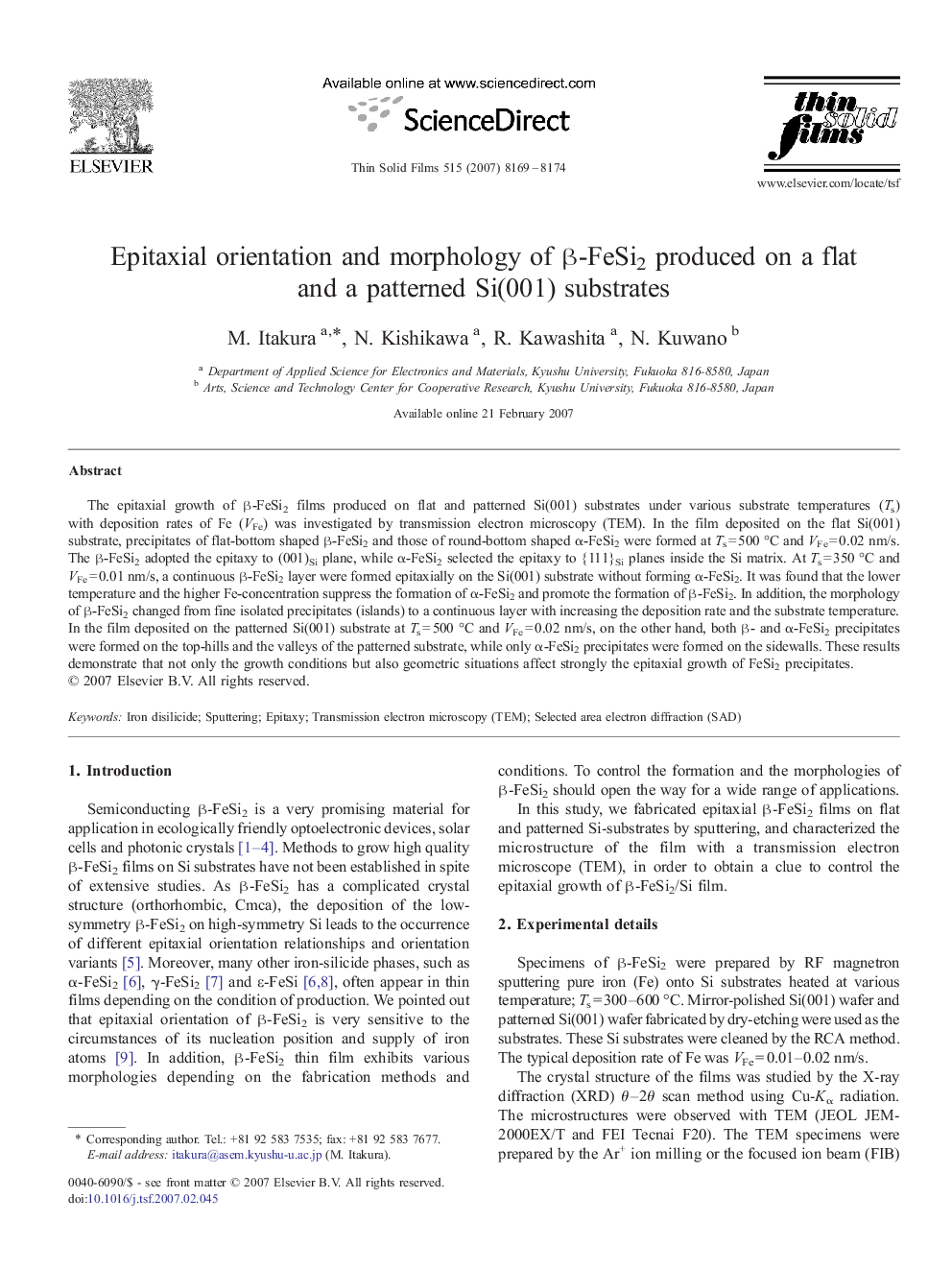| Article ID | Journal | Published Year | Pages | File Type |
|---|---|---|---|---|
| 1674214 | Thin Solid Films | 2007 | 6 Pages |
Abstract
The epitaxial growth of β-FeSi2 films produced on flat and patterned Si(001) substrates under various substrate temperatures (Ts) with deposition rates of Fe (VFe) was investigated by transmission electron microscopy (TEM). In the film deposited on the flat Si(001) substrate, precipitates of flat-bottom shaped β-FeSi2 and those of round-bottom shaped α-FeSi2 were formed at Ts = 500 °C and VFe = 0.02 nm/s. The β-FeSi2 adopted the epitaxy to (001)Si plane, while α-FeSi2 selected the epitaxy to {111}Si planes inside the Si matrix. At Ts = 350 °C and VFe = 0.01 nm/s, a continuous β-FeSi2 layer were formed epitaxially on the Si(001) substrate without forming α-FeSi2. It was found that the lower temperature and the higher Fe-concentration suppress the formation of α-FeSi2 and promote the formation of β-FeSi2. In addition, the morphology of β-FeSi2 changed from fine isolated precipitates (islands) to a continuous layer with increasing the deposition rate and the substrate temperature. In the film deposited on the patterned Si(001) substrate at Ts = 500 °C and VFe = 0.02 nm/s, on the other hand, both β- and α-FeSi2 precipitates were formed on the top-hills and the valleys of the patterned substrate, while only α-FeSi2 precipitates were formed on the sidewalls. These results demonstrate that not only the growth conditions but also geometric situations affect strongly the epitaxial growth of FeSi2 precipitates.
Related Topics
Physical Sciences and Engineering
Materials Science
Nanotechnology
Authors
M. Itakura, N. Kishikawa, R. Kawashita, N. Kuwano,
